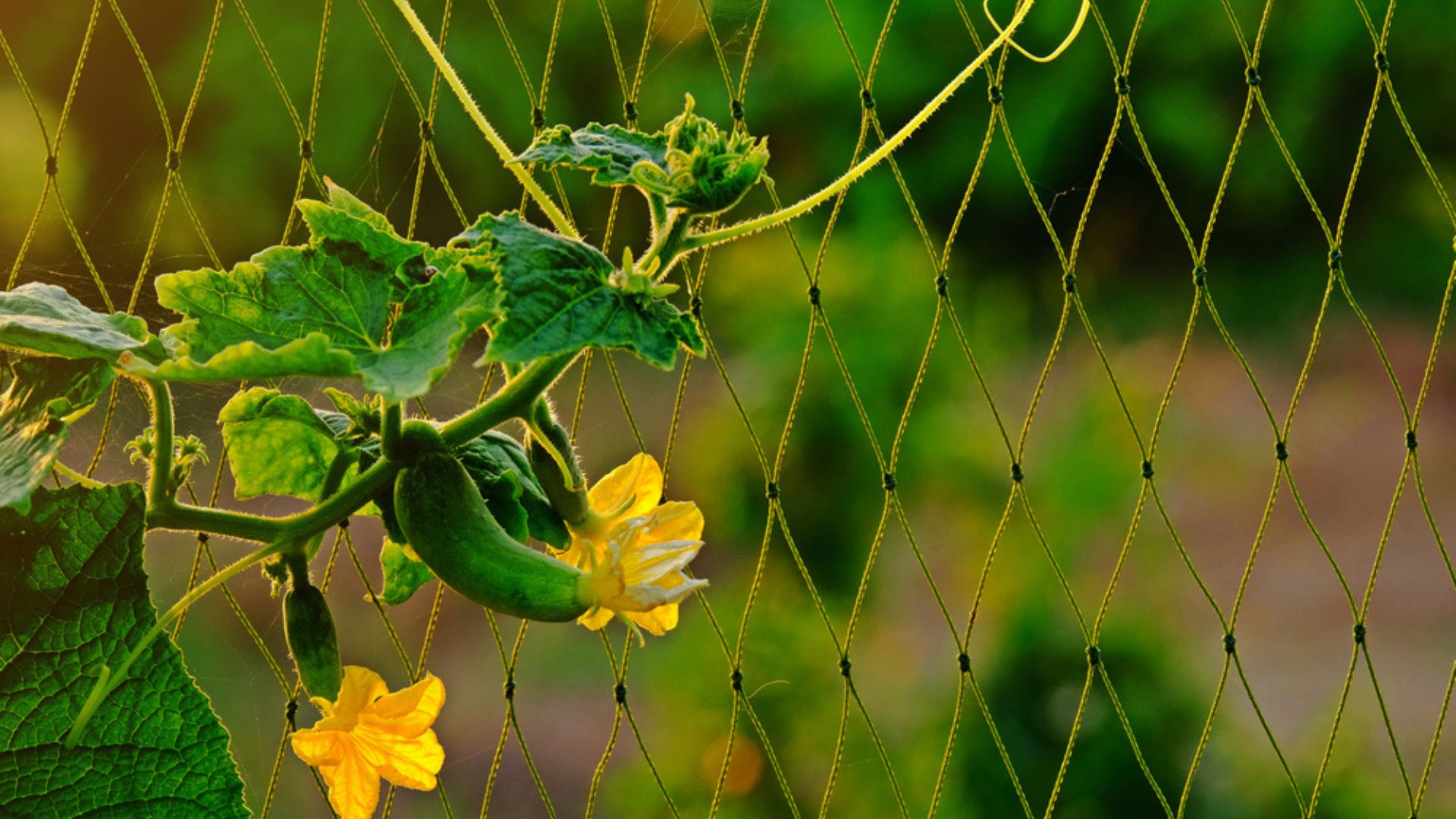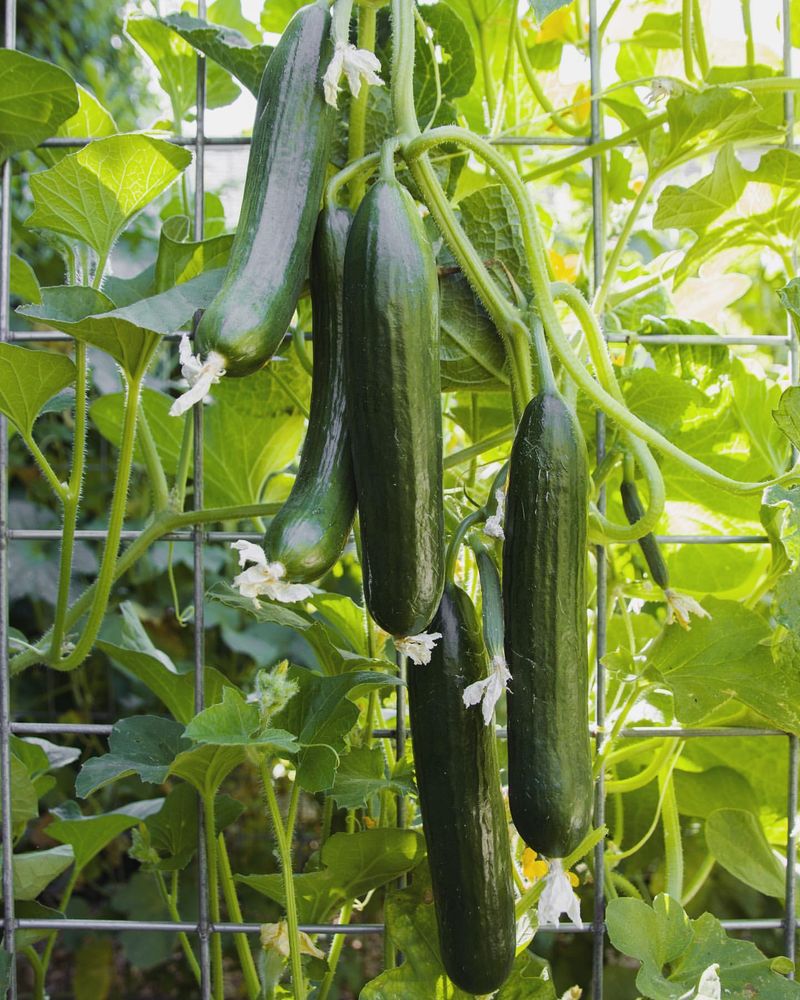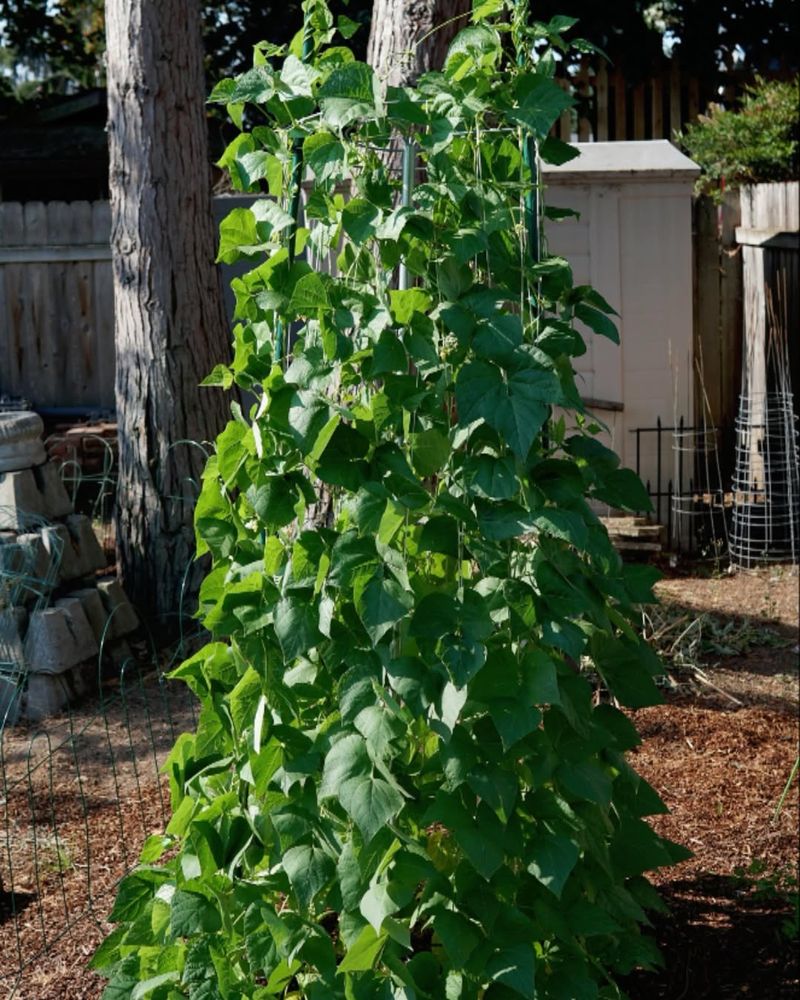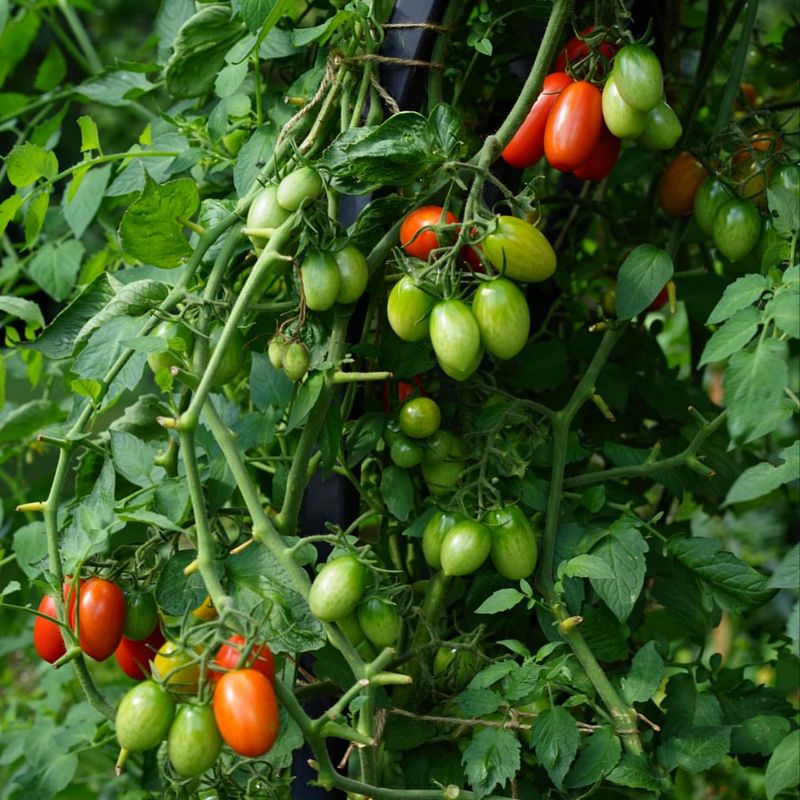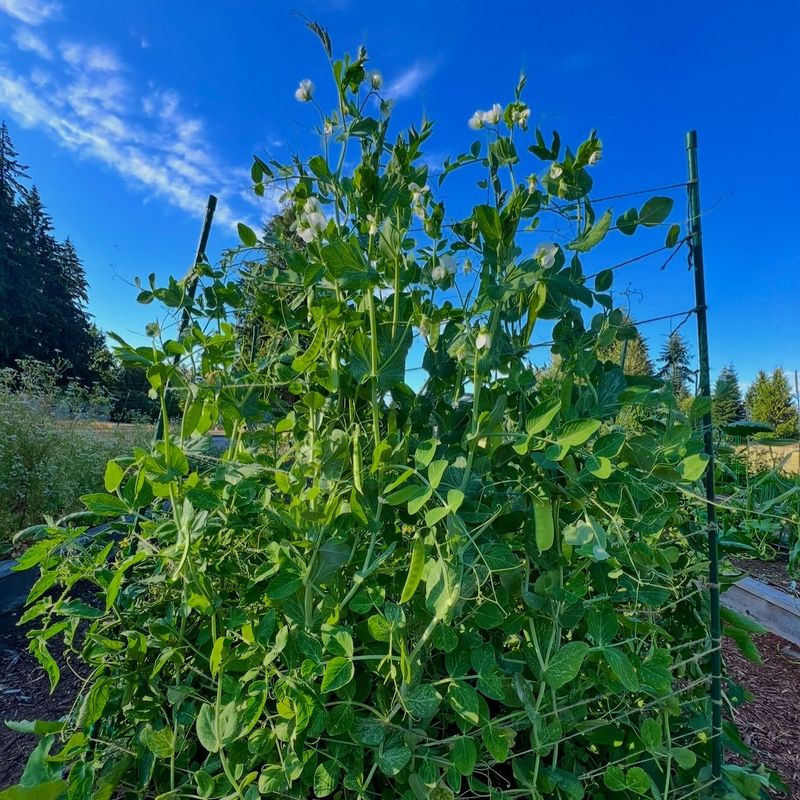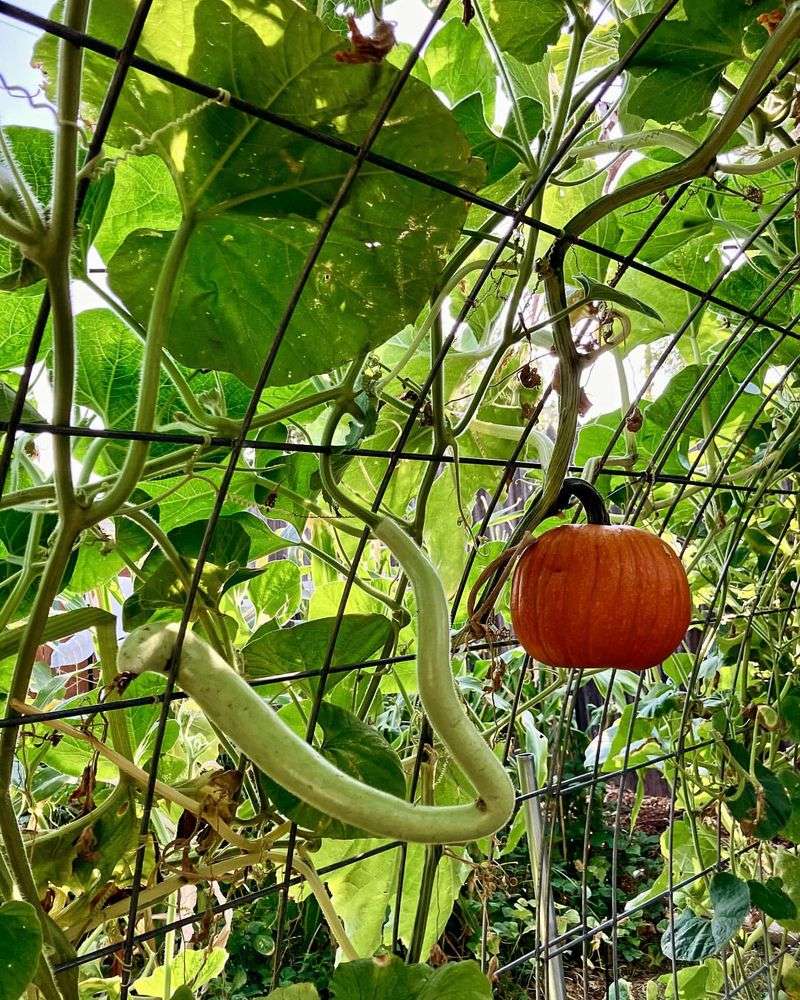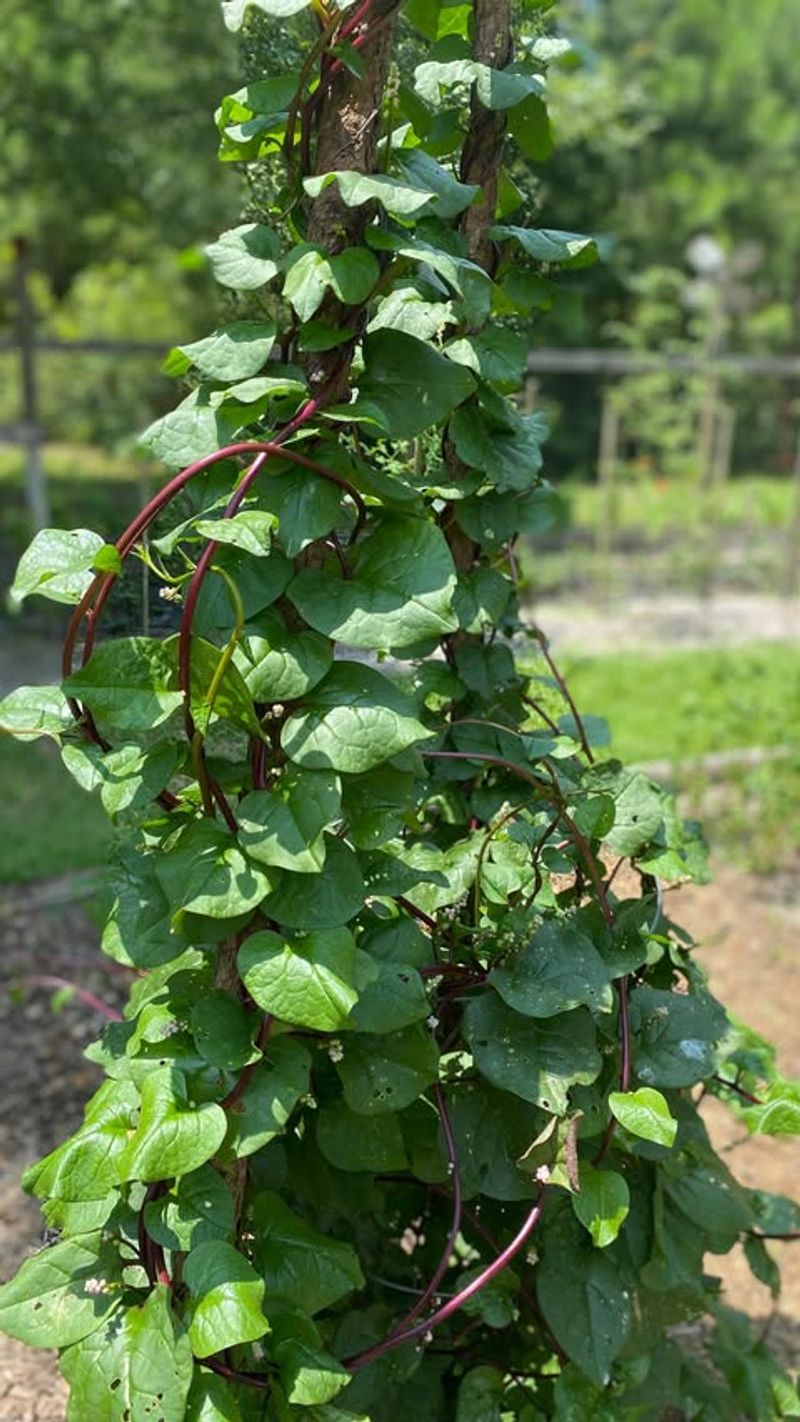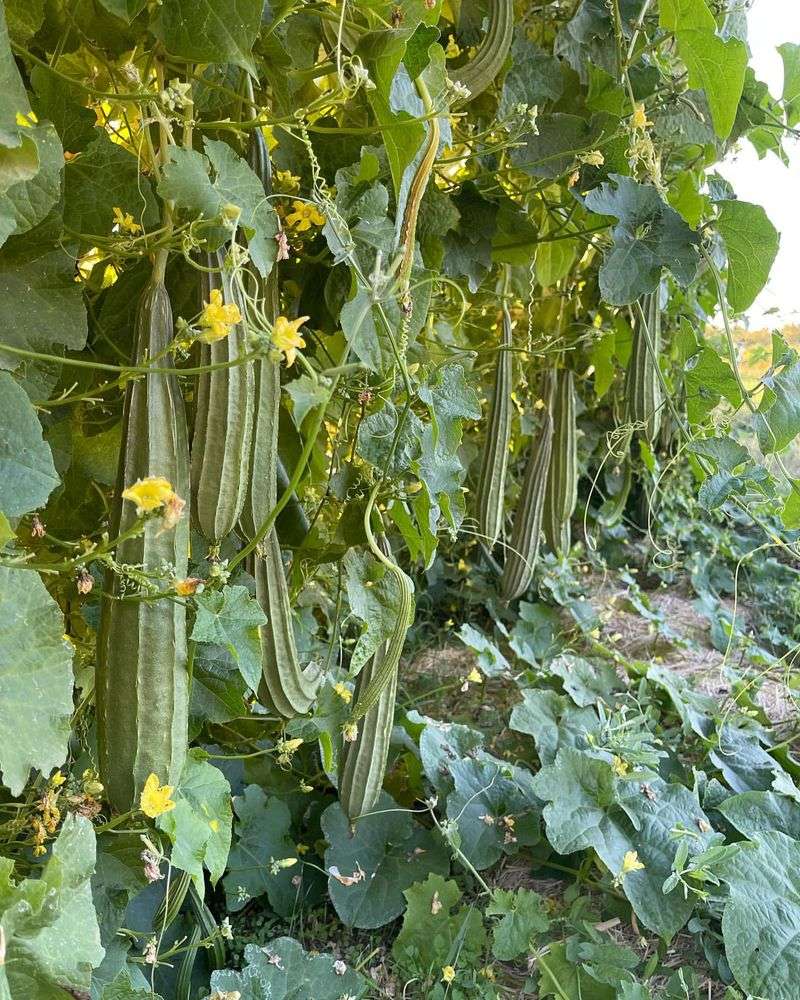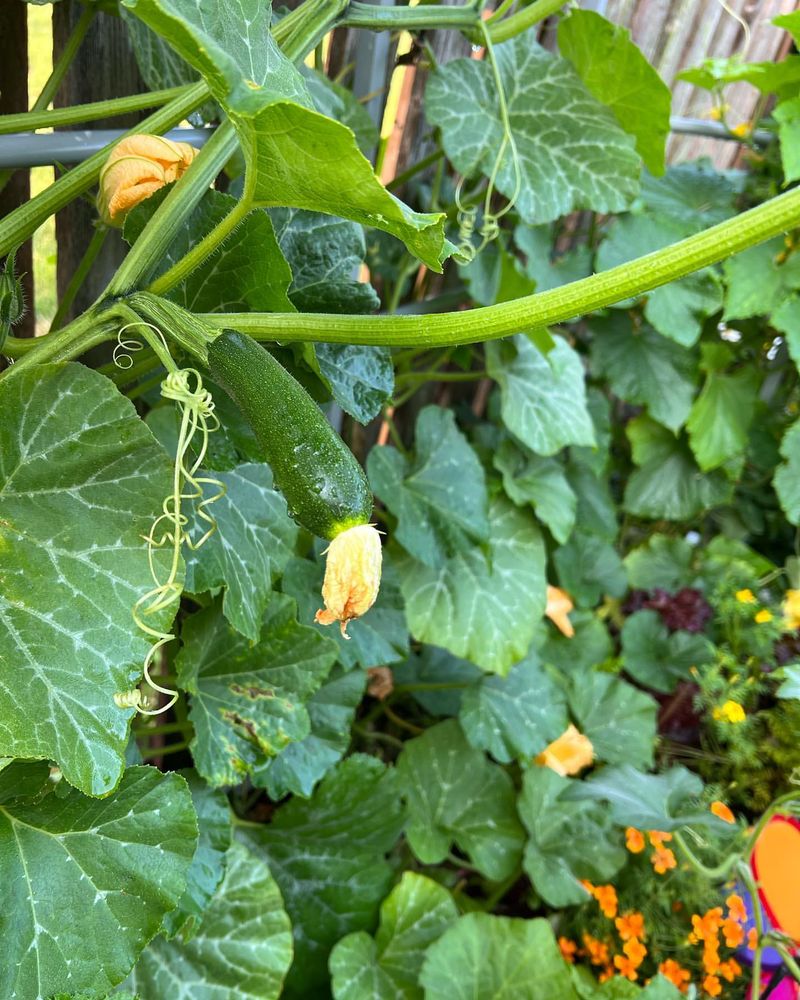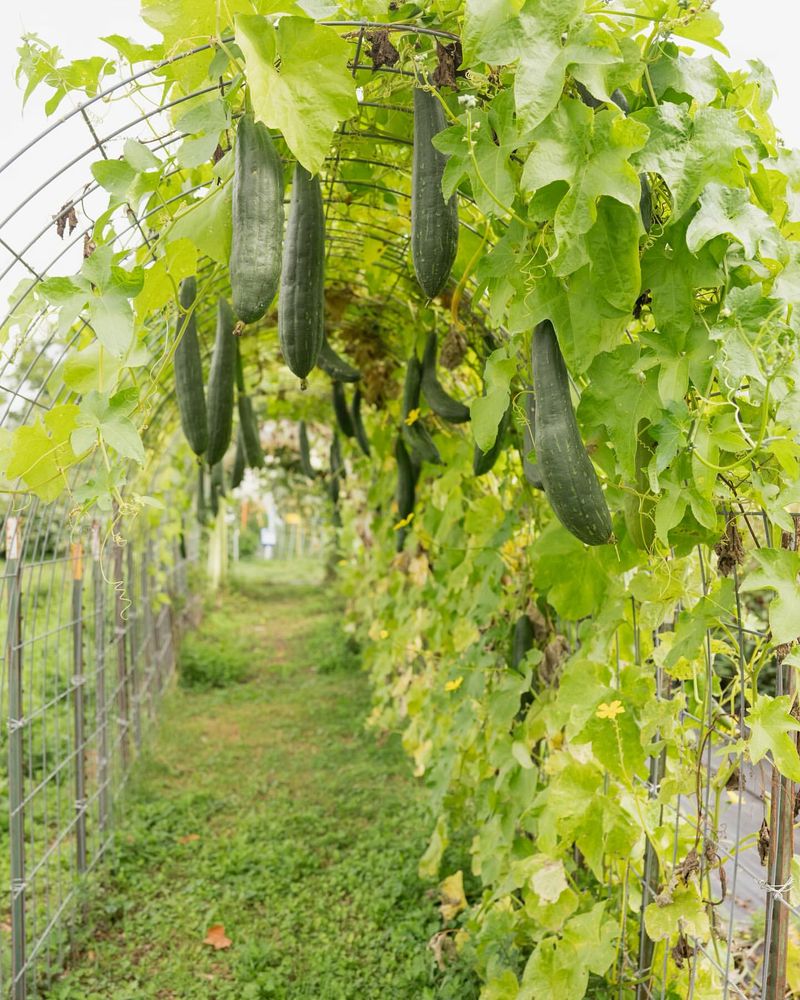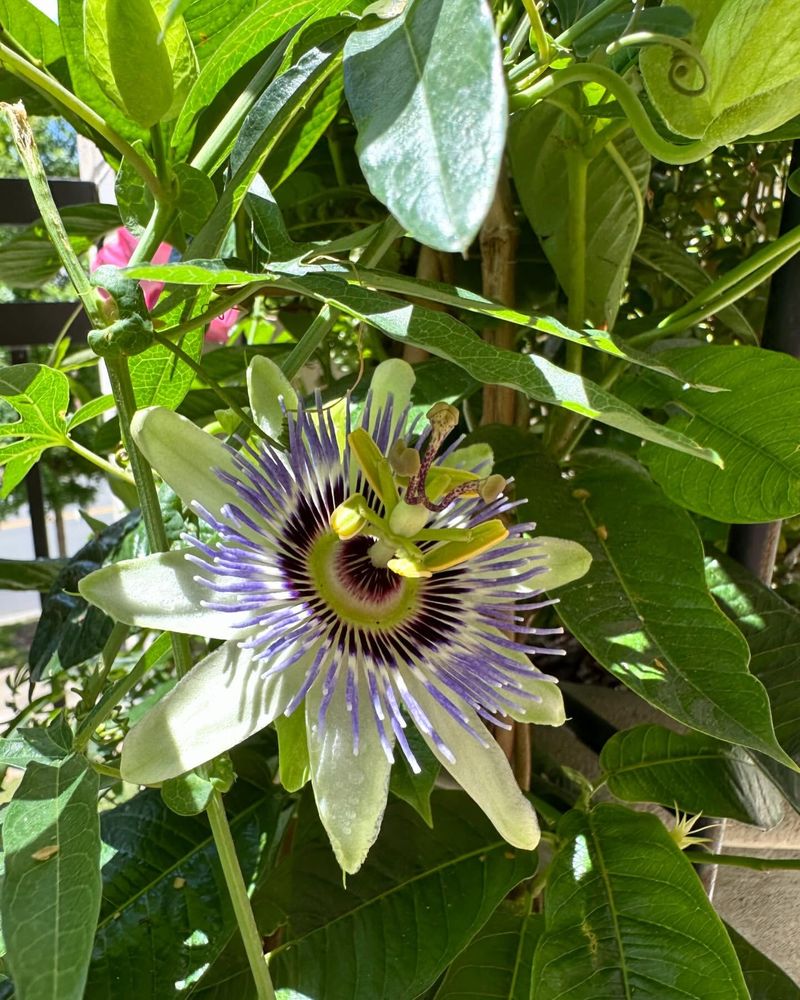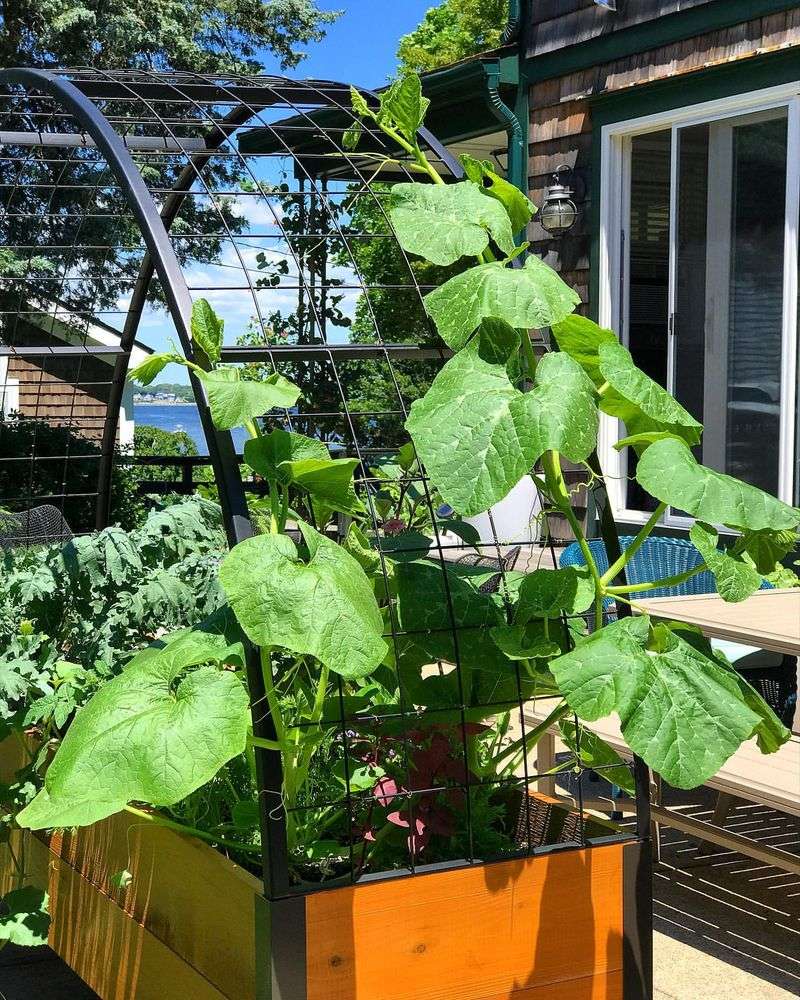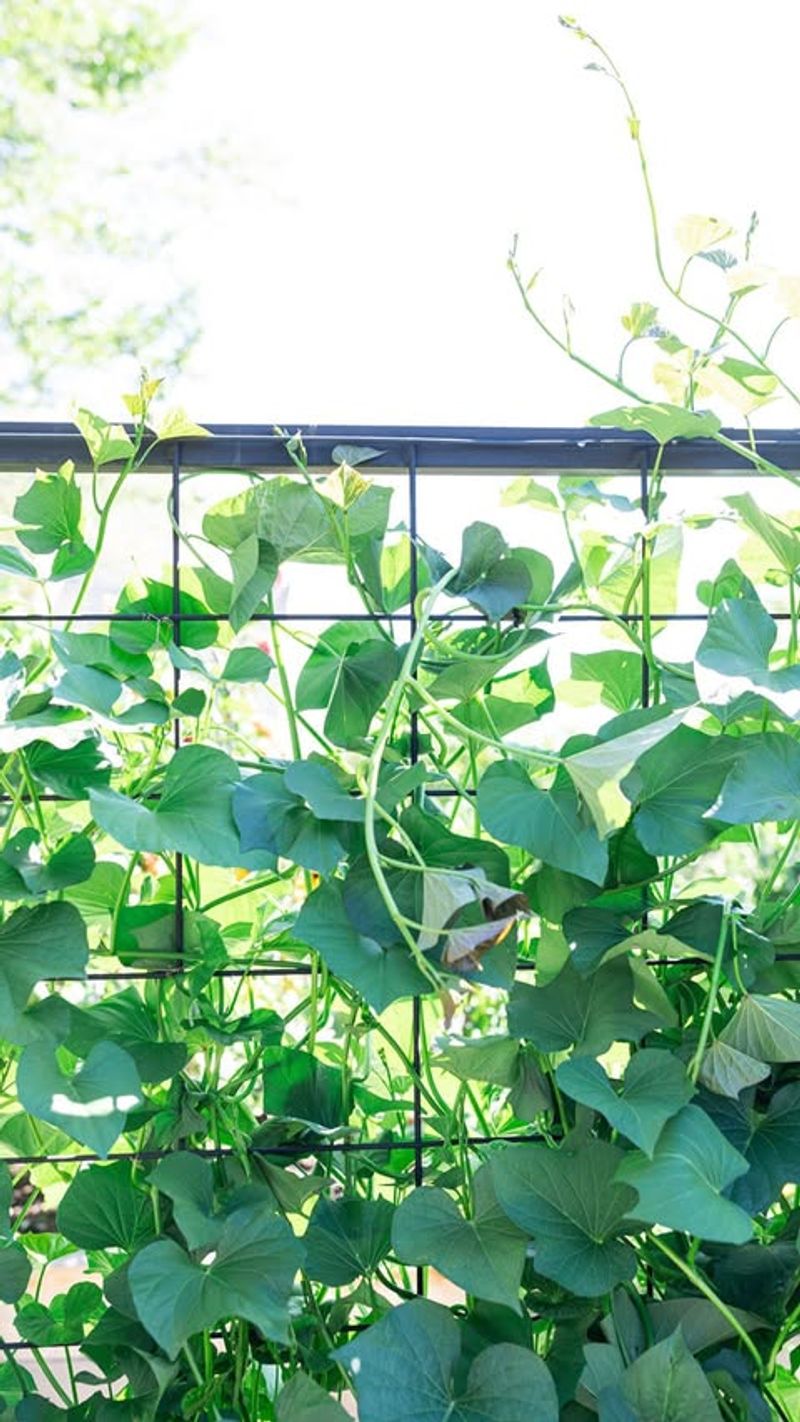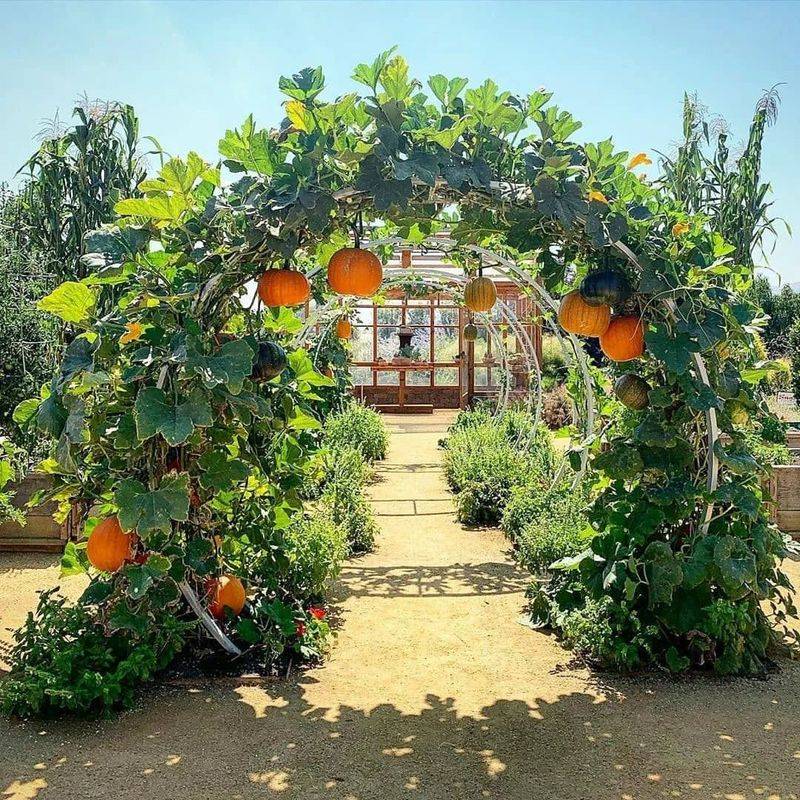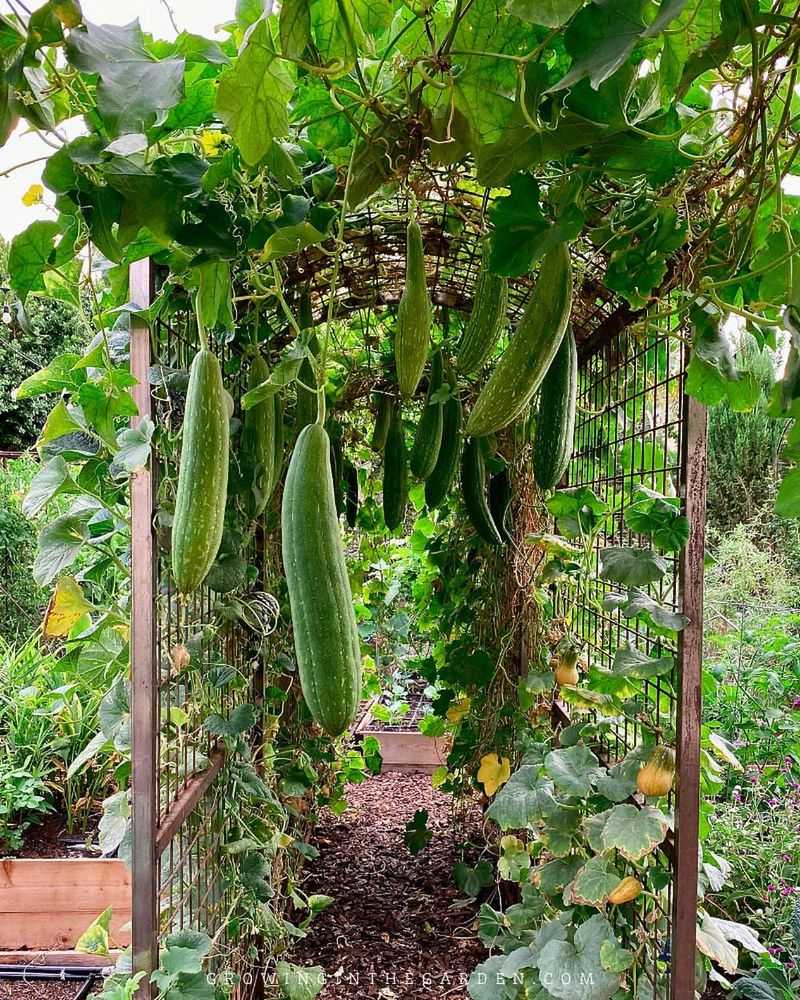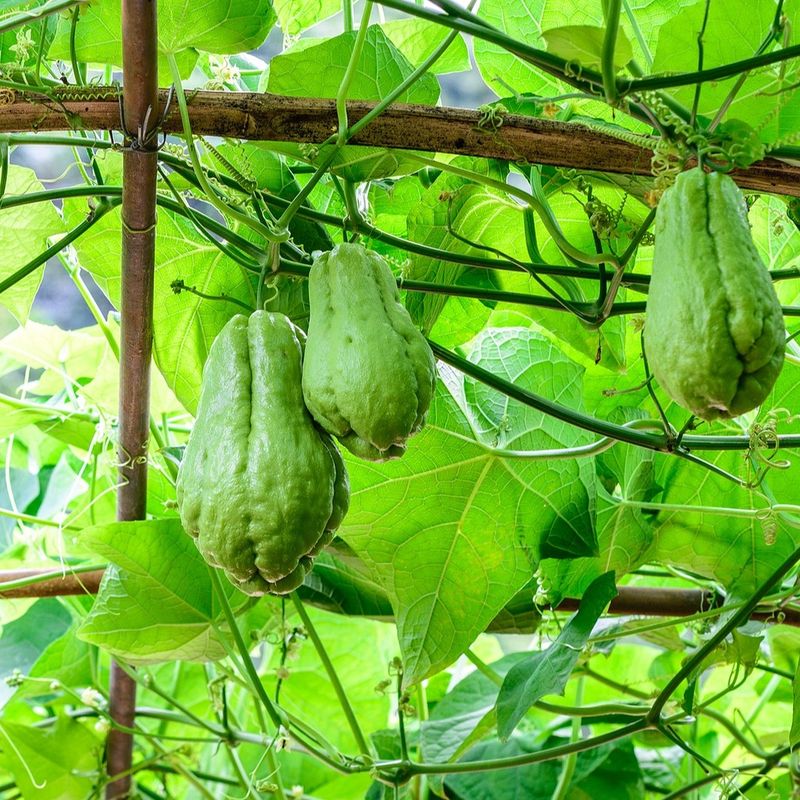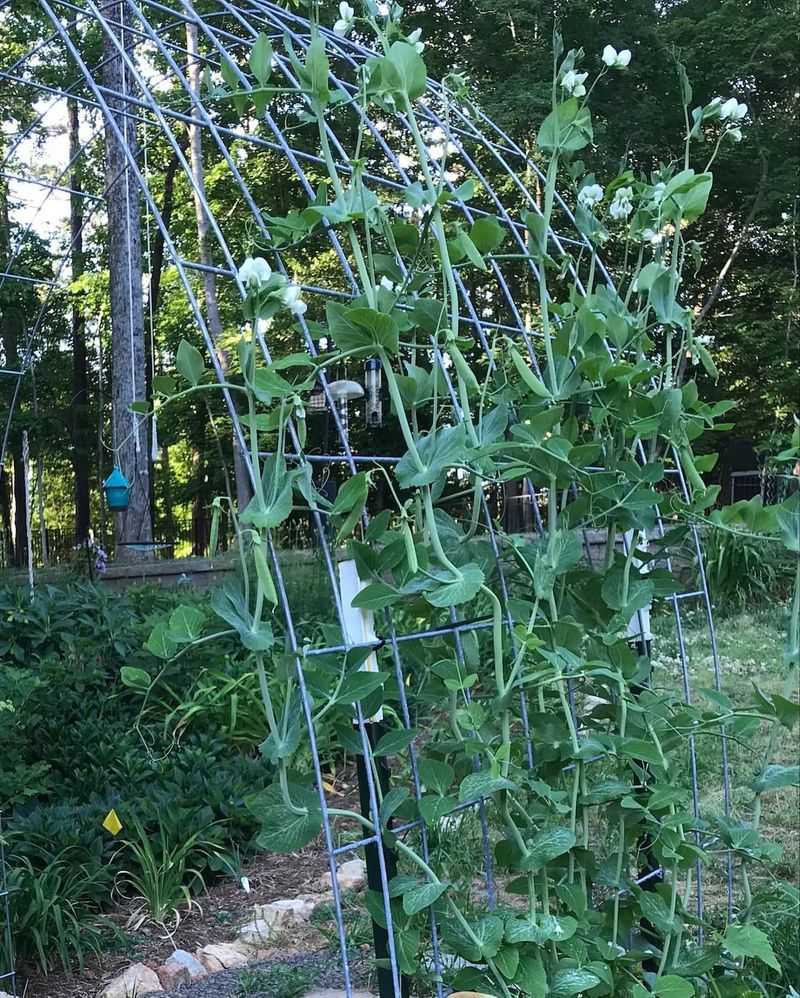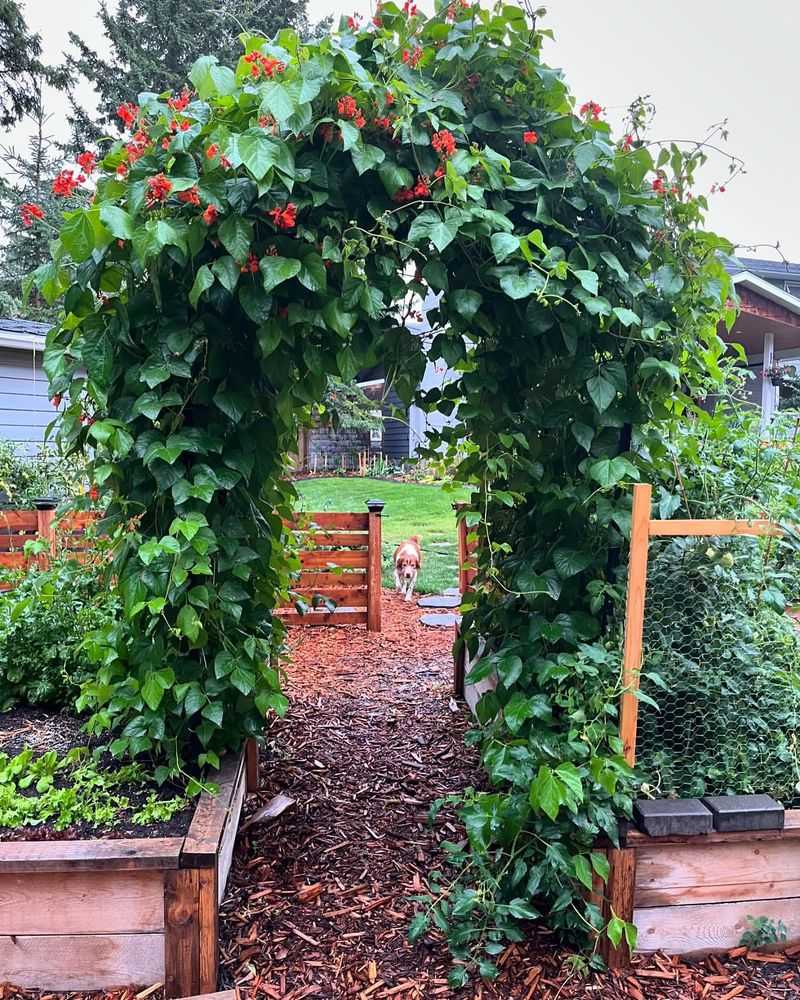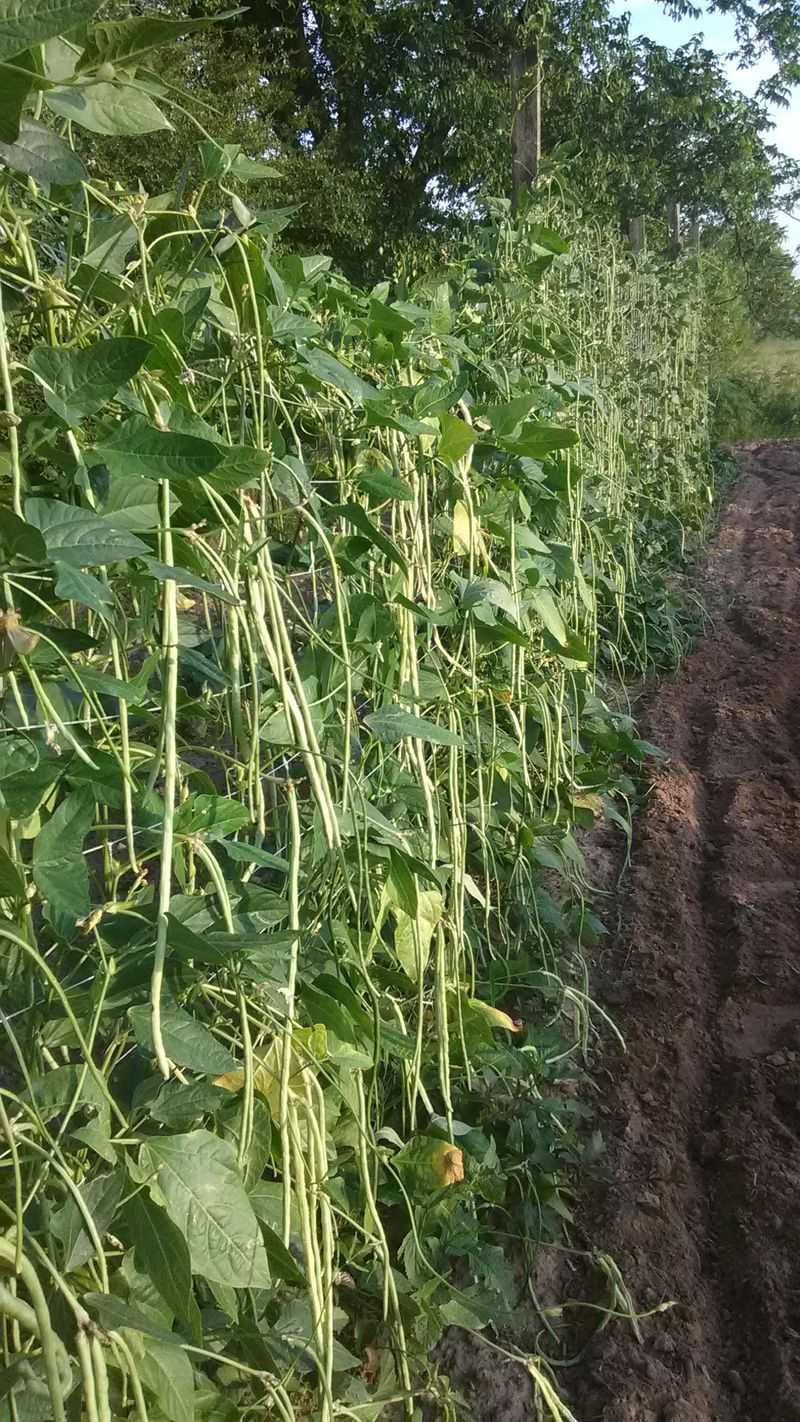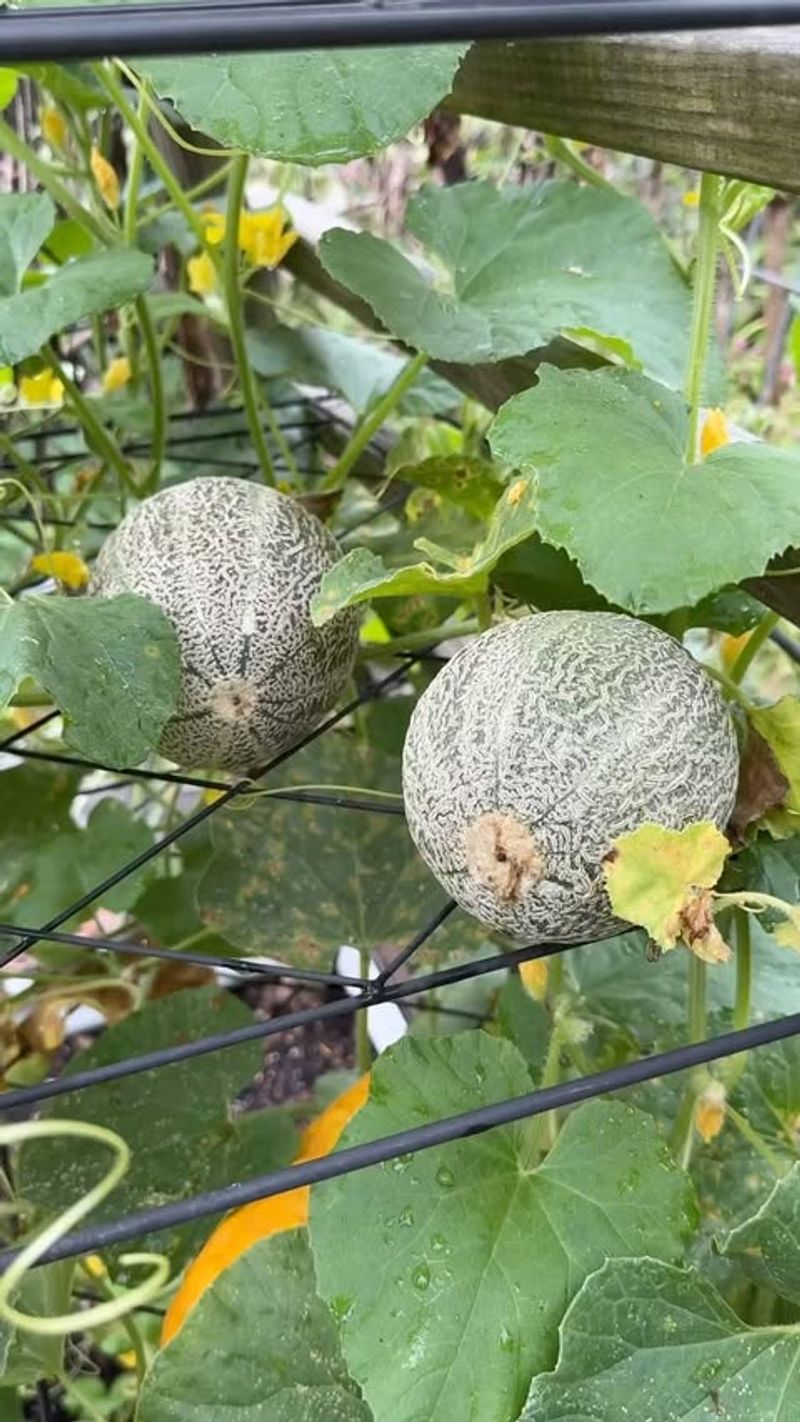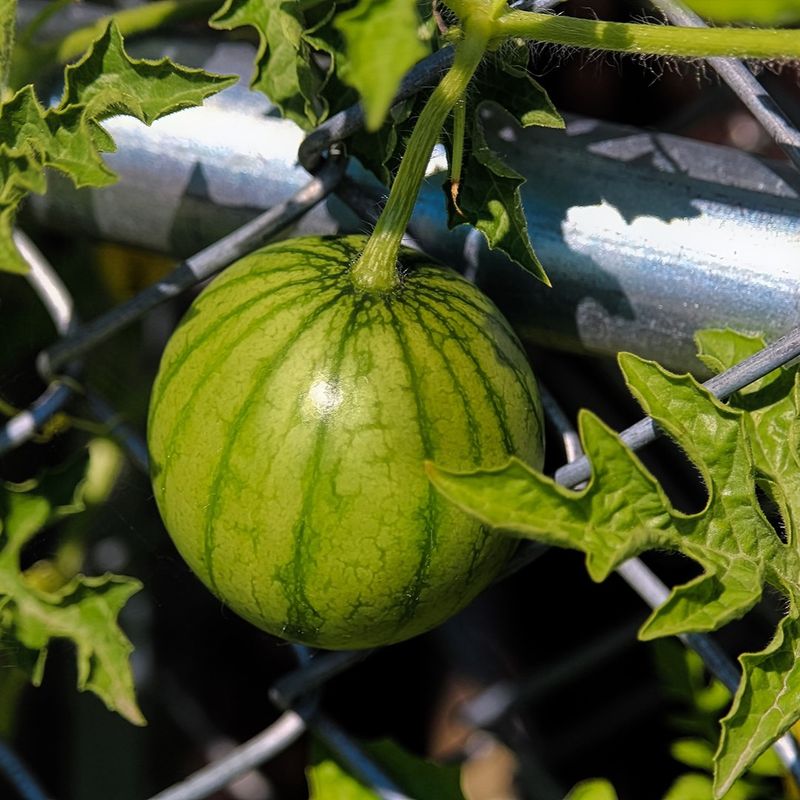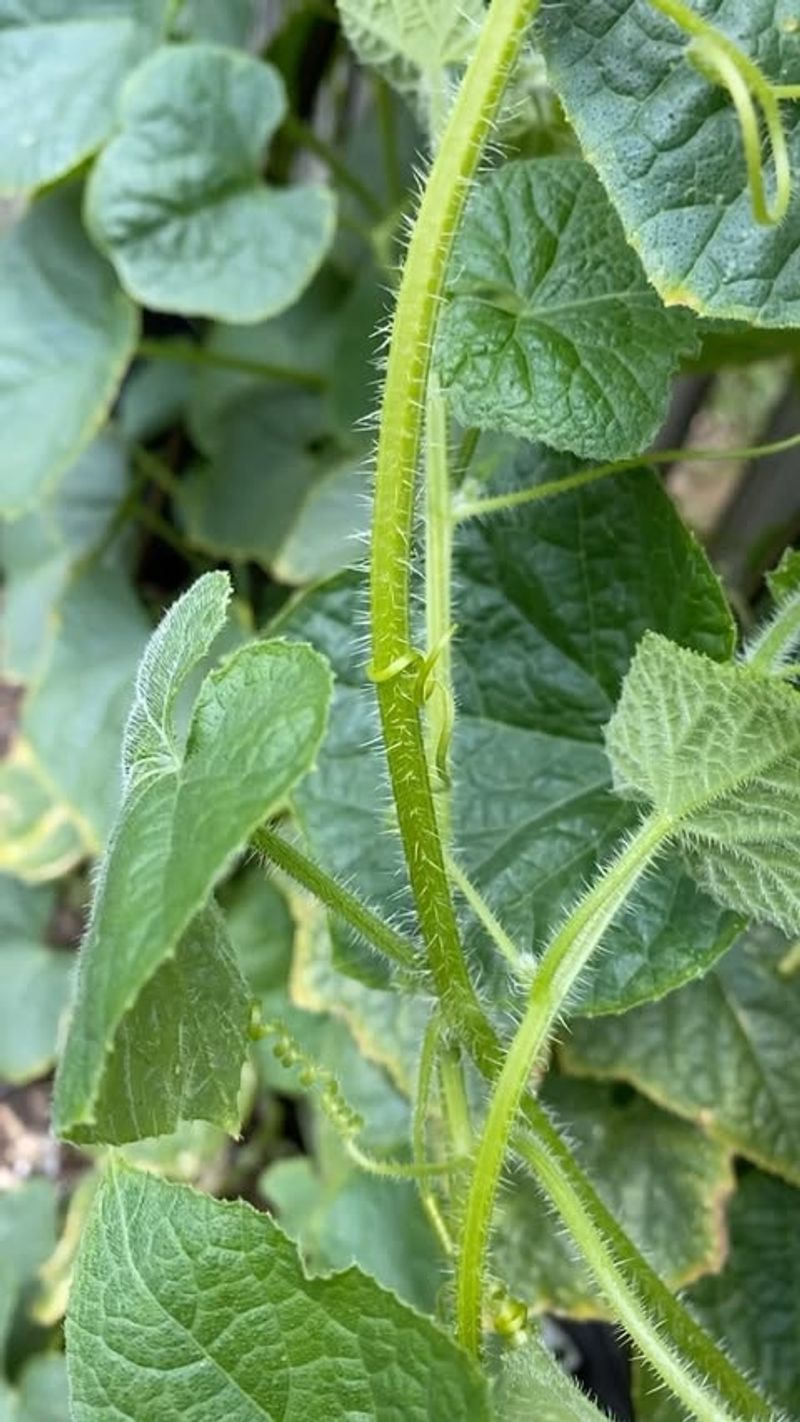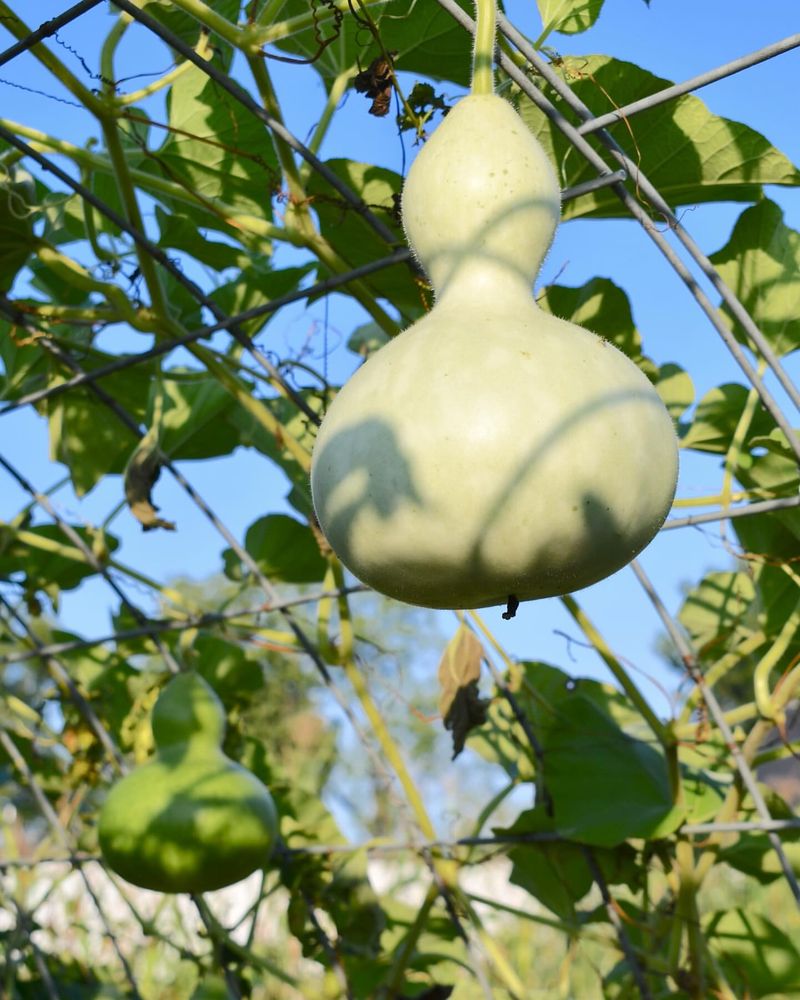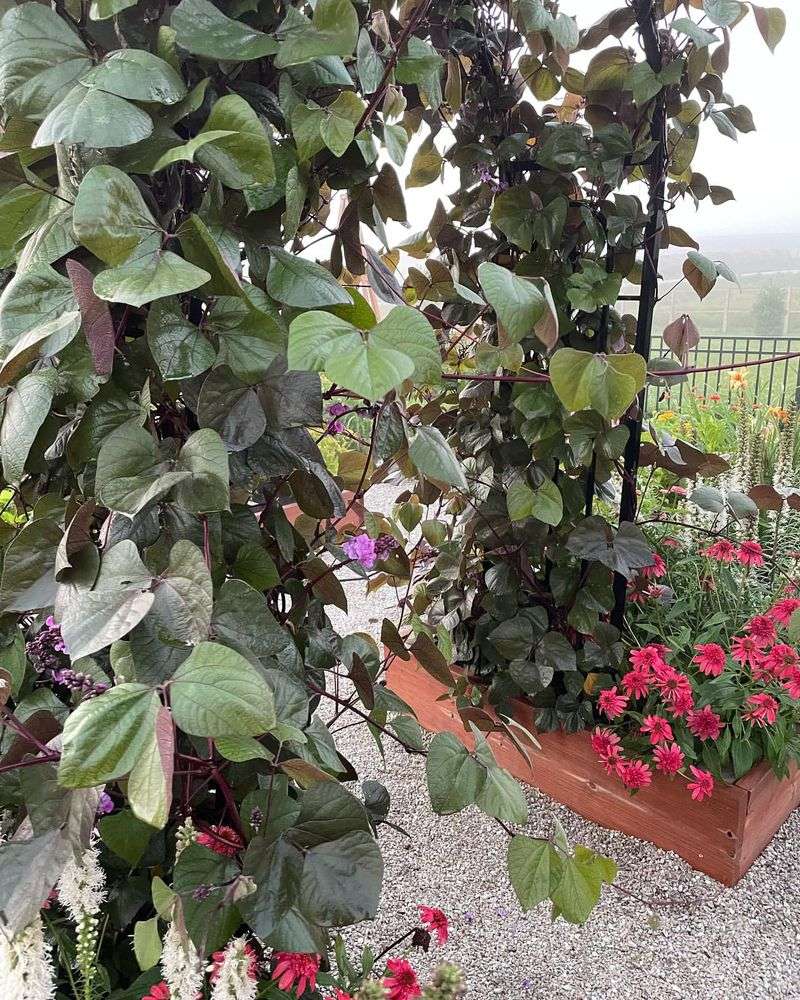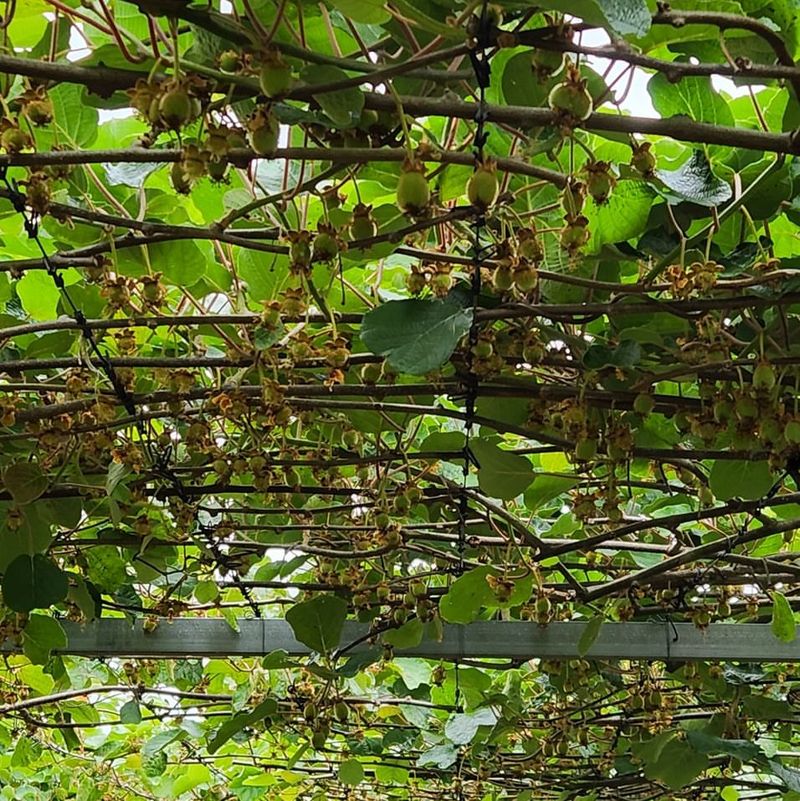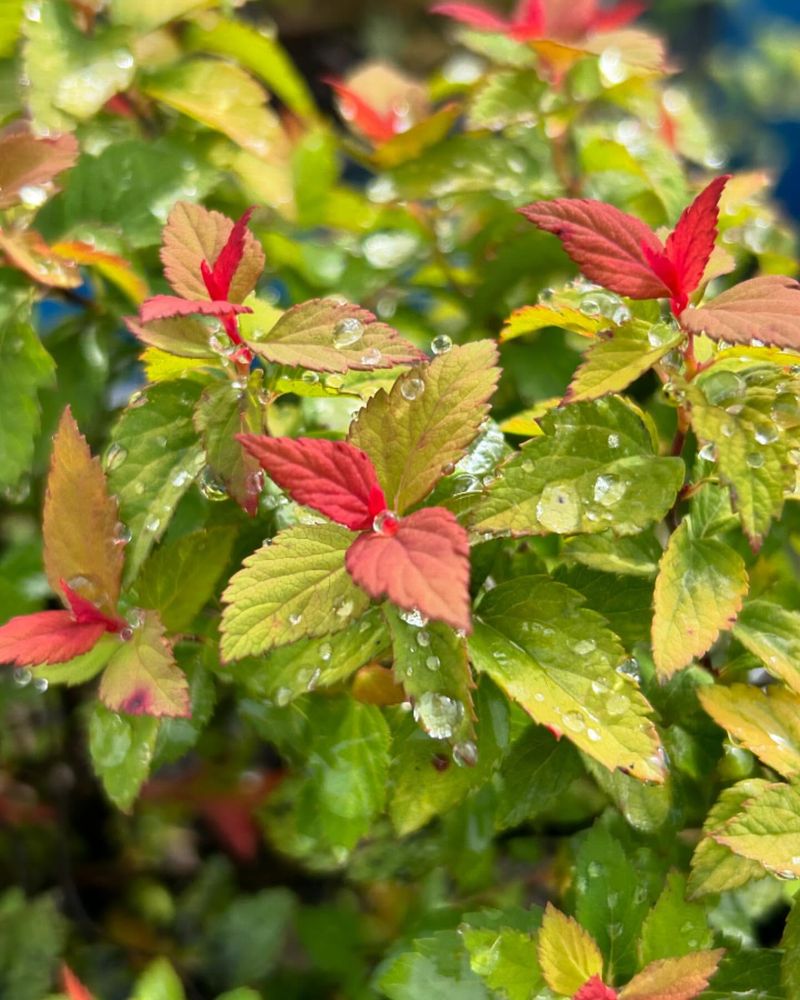Growing vegetables on a trellis is an excellent way to maximize garden space and improve air circulation. Trellises offer support to climbing plants, making harvesting easier and reducing pest issues.
In this guide, we explore 25 of the best vegetables that thrive on a trellis, offering specific growing tips and benefits for each.
1. Cucumbers
When space is limited in your garden, utilizing vertical growth can be a game-changer. Cucumbers thrive when allowed to climb a trellis, producing long, fresh fruits.
Growing cucumbers on a trellis not only saves space but also keeps the fruits clean and more accessible for harvesting. The increase in air circulation reduces disease pressure, leading to healthier plants.
Incorporating a trellis into your cucumber patch can also add visual interest to your garden, transforming it into an inviting and productive space. Enjoy a bountiful harvest with this simple addition.
2. Pole Beans
Vertical gardening can enhance productivity, especially with pole beans. These vigorous climbers quickly cover a trellis, offering a bountiful yield.
The support of a trellis facilitates easier picking and keeps beans off the ground, minimizing rot. With the added height, pole beans receive more sunlight, boosting their growth and yield.
Integrating a trellis for pole beans can also keep your garden tidy and organized. This method is a fantastic way to enjoy fresh beans throughout the growing season.
3. Tomatoes
Supporting tomatoes with a trellis can significantly improve their growth and fruit production. The structure helps keep the plant upright, preventing sprawling.
Trellised tomatoes benefit from improved air circulation, reducing the risk of fungal diseases. Additionally, the fruits are less likely to touch the ground, remaining clean and less prone to pests.
A trellis can support the weight of tomato clusters, making harvesting simpler and more efficient. This approach not only maximizes space but also enhances the overall health of the plants.
4. Peas
Incorporating a trellis in your pea garden can lead to amazing results. Peas naturally climb, making them perfect candidates for trellising.
The use of a trellis allows peas to grow upward, saving ground space and making harvesting more convenient. This method also encourages better air flow, reducing disease risk.
Trellised peas are less likely to suffer from soil-borne diseases and pests, promoting healthier plants and tastier peas. The vertical growth can also add beauty to your garden.
5. Squash
Growing squash vertically on a trellis can be a rewarding experience. The support helps manage the sprawling habit typical of squash plants.
When guided up a trellis, squash plants can produce more efficiently, with fruits hanging free from the ground. This minimizes rot and pest issues, leading to a healthier crop.
A trellis not only supports the plant but also eases the strain on the gardener’s back during harvest. This method transforms your garden into a more organized and productive space.
6. Malabar Spinach
For those seeking a unique and nutritious plant, Malabar spinach is an excellent choice for trellising. This leafy green thrives when climbing, producing lush foliage.
The vertical growth habit of Malabar spinach allows gardeners to maximize space and enjoy a continuous harvest. Trellising keeps the plant tidy and supports its rapid growth.
This method enhances the plant’s access to sunlight and air, promoting a healthier and more productive growth cycle. Enjoy the benefits of fresh, homegrown greens right at your fingertips.
7. Bitter Melon
A trellis can be an essential tool for growing bitter melon, a unique and nutritious vegetable. The plant’s climbing nature makes it well-suited for vertical growth.
Using a trellis, bitter melon vines can grow upward, making fruits more accessible and reducing ground contact. This reduces the risk of rot and pest issues.
Trellising can also enhance the plant’s aesthetic appeal, adding a tropical touch to your garden. This method supports vigorous growth and can lead to a more abundant harvest.
8. Zucchini
Growing zucchini on a trellis can help manage its sprawling nature. This method saves space and keeps the fruit cleaner.
By guiding zucchini upward, air circulation is improved, reducing disease risk. Fruits are more visible and accessible, making harvest easier.
A trellis can support the weight of zucchini, preventing ground contact and minimizing rot. This approach enhances garden aesthetics and productivity.
9. Gourds
Vertical gardening with gourds can be both functional and decorative. Gourds thrive when given space to climb.
Using a trellis, gourd vines can stretch upward, allowing fruits to hang freely. This minimizes ground contact and rot issues.
Trellised gourds add vertical interest and beauty to your garden, offering both decorative and practical benefits. Enjoy a unique and bountiful harvest with this method.
10. Passion Fruit
For an exotic touch in your garden, consider trellising passion fruit. This vigorous climber produces stunning flowers and delicious fruit.
A trellis helps support the plant’s rapid growth, ensuring better air circulation and sunlight exposure. This promotes healthier vines and more fruitful yields.
Trellising makes it easier to manage and harvest passion fruits, adding both beauty and productivity to your garden. Experience a taste of the tropics right at home.
11. Winter Squash
Maximize garden space by growing winter squash on a trellis. This technique supports the plant’s heavy fruits.
Trellising helps keep squash off the ground, reducing pest and rot issues. The vertical growth also enhances air flow and sunlight exposure.
This method can simplify harvesting and improve overall plant health. Enjoy an abundant winter squash harvest with minimal effort.
12. Sweet Potatoes
Consider trellising to manage sweet potato vines. This approach helps control their sprawling nature and save space.
By guiding the vines upward, sweet potatoes can receive more sunlight, improving growth. Trellising also keeps the garden tidy and organized.
This method can enhance the aesthetics of your garden while supporting healthier plant development. Enjoy the benefits of vertical gardening with sweet potatoes.
13. Pumpkins
Pumpkin lovers can benefit from vertical gardening. Trellising supports the plant’s heavy fruits and saves space.
Guiding pumpkins up a trellis improves air circulation and reduces ground contact, minimizing rot. This method supports healthier growth and larger yields.
Trellising makes it easier to manage and harvest pumpkins, transforming your garden into a productive space. Enjoy plentiful harvests with less effort.
14. Luffa
For gardeners looking to grow something different, luffa is an intriguing option. This plant thrives when allowed to climb.
A trellis supports the luffa’s rapid growth, keeping vines organized and fruits off the ground. This reduces rot and improves harvest quality.
Trellising enhances the plant’s growth conditions, promoting healthier development. Experience the delight of homegrown luffa sponges with this method.
15. Chayote
Chayote can benefit greatly from trellising. This climbing plant produces pear-shaped fruits and requires sturdy support.
By using a trellis, chayote vines can grow upward, reducing ground contact and minimizing pest issues. The fruits become more accessible for harvesting.
Trellising helps organize the plant, enhancing garden aesthetics and productivity. Enjoy a bountiful chayote harvest with this simple technique.
16. Snap Peas
Incorporate a trellis to maximize snap pea growth. These climbers benefit from vertical gardening.
A trellis supports snap peas, improving air circulation and sunlight exposure. This encourages healthier plants and abundant yields.
Trellising keeps peas off the ground, reducing rot and pest issues. Enjoy fresh and tasty snap peas with this efficient gardening practice.
17. Runner Beans
Transform your garden with runner beans on a trellis. This method supports their vigorous growth.
A trellis keeps the plants upright, improving air flow and sunlight exposure. This leads to healthier plants and higher yields.
Trellising also makes harvesting easier and enhances garden aesthetics. Experience the joy of fresh runner beans with this approach.
18. Yardlong Beans
Optimize your garden space by growing yardlong beans on a trellis. This method supports their extensive growth.
Trellising helps the beans reach their full potential, improving air circulation and sunlight exposure. This results in healthier plants and larger yields.
The vertical growth keeps beans off the ground, reducing pest issues and easing harvest. Enjoy the benefits of trellised yardlong beans.
19. Cantaloupes
Discover the advantages of growing cantaloupes on a trellis. This method supports the plant’s heavy fruits.
Trellising keeps cantaloupes off the ground, reducing rot and pest problems. Improved air circulation and sunlight exposure promote healthier plants.
This technique simplifies harvesting and enhances garden aesthetics. Enjoy sweet and juicy cantaloupes with minimal effort.
20. Watermelons
Watermelons can thrive with the support of a trellis. This method helps manage the plant’s sprawling nature.
By guiding watermelons upward, air circulation improves, reducing disease risks. Trellising also keeps fruits off the ground, minimizing rot.
This approach supports healthier growth and simplifies harvesting. Relish the juicy harvest of trellised watermelons.
21. Kiwano
For a unique addition to your garden, consider kiwano on a trellis. This exotic fruit benefits from vertical growth.
A trellis supports kiwano’s extensive vines, improving air circulation and sunlight exposure. This promotes healthier plants and better yields.
Trellising keeps fruits off the ground, reducing rot and pest issues. Experience the novelty of homegrown kiwano with this method.
22. Pumpkin Gourds
Pumpkin gourds can be a delightful addition to your garden. Trellising provides the necessary support for their growth.
The vertical structure keeps gourds off the ground, improving air circulation and reducing pest issues. This encourages healthier plants.
Trellising can enhance the visual appeal of your garden while supporting a bountiful harvest. Discover the benefits of growing pumpkin gourds vertically.
23. Hyacinth Beans
Incorporate hyacinth beans into your vertical garden. These climbers thrive when given space to grow upward.
A trellis supports their growth, improving air circulation and sunlight exposure. This leads to healthier plants and more productive yields.
Trellising also makes harvesting easier and enhances garden aesthetics. Enjoy the beauty and bounty of hyacinth beans in your garden.
24. Kiwi
Introduce kiwi to your garden with the help of a trellis. This method supports their vigorous growth.
Trellising helps manage the plant’s extensive vines, improving air flow and sunlight exposure. This promotes healthier plants and better fruit production.
The support of a trellis makes harvesting easier and enhances the garden’s appeal. Enjoy fresh kiwis right from your backyard.
25. Akebia
For a unique and ornamental plant, consider growing akebia on a trellis. This climber offers stunning foliage and fruits.
A trellis supports akebia’s growth, enhancing air circulation and sunlight exposure. This encourages healthier plants and more beautiful blooms.
Trellising can add vertical interest to your garden, improving both aesthetics and productivity. Experience the charm of akebia in your garden.

